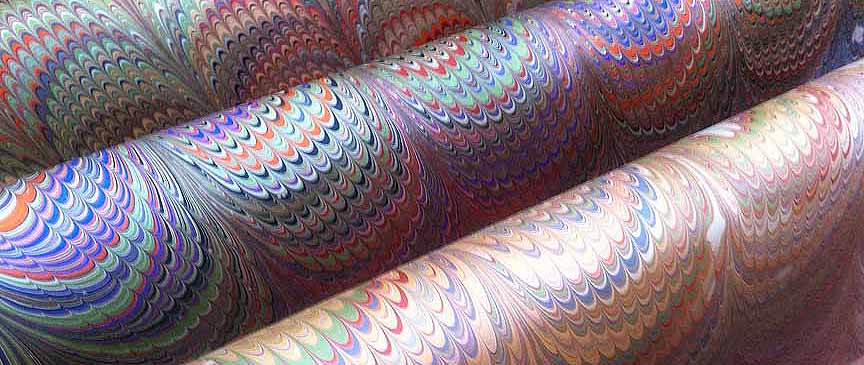



Marbled paper is made by floating colors on a seaweed bath. The colors are drawn into patterns (called combed patterns) with combs and rakes, or left as is (called stone patterns). Paper prepared with alum is then laid on the bath and the colors instantly bond to the paper. The paper is then rinsed and allowed to dry. The colors do not run. Each sheet of marbled paper is different from every other.
Paper marbling can be done with water-base paints, oils, or acrylics. The traditional method, which is what I use, employs water-base colors. I marble sheets that are approximately 19" x 25". I generally use acid-free paper, though I sometimes marble on brown kraft paper. There are many standard patterns that, with unlimited color selections, provide infinite variety in the sheets.
Click here to see some examples of my papers. Click here to see some of the things that you can do with marbled paper.
My papers are sold primarily through art and craft shows in and around the Denver, Colorado, area. Because each sheet is different, they don't lend themselves well to online sales, as each sheet would need to be photographed separately so that you would know what you're getting. However, if you are interested in purchasing some papers, please drop me a note at mhpapers@comcast.net and we can discuss possibilities.